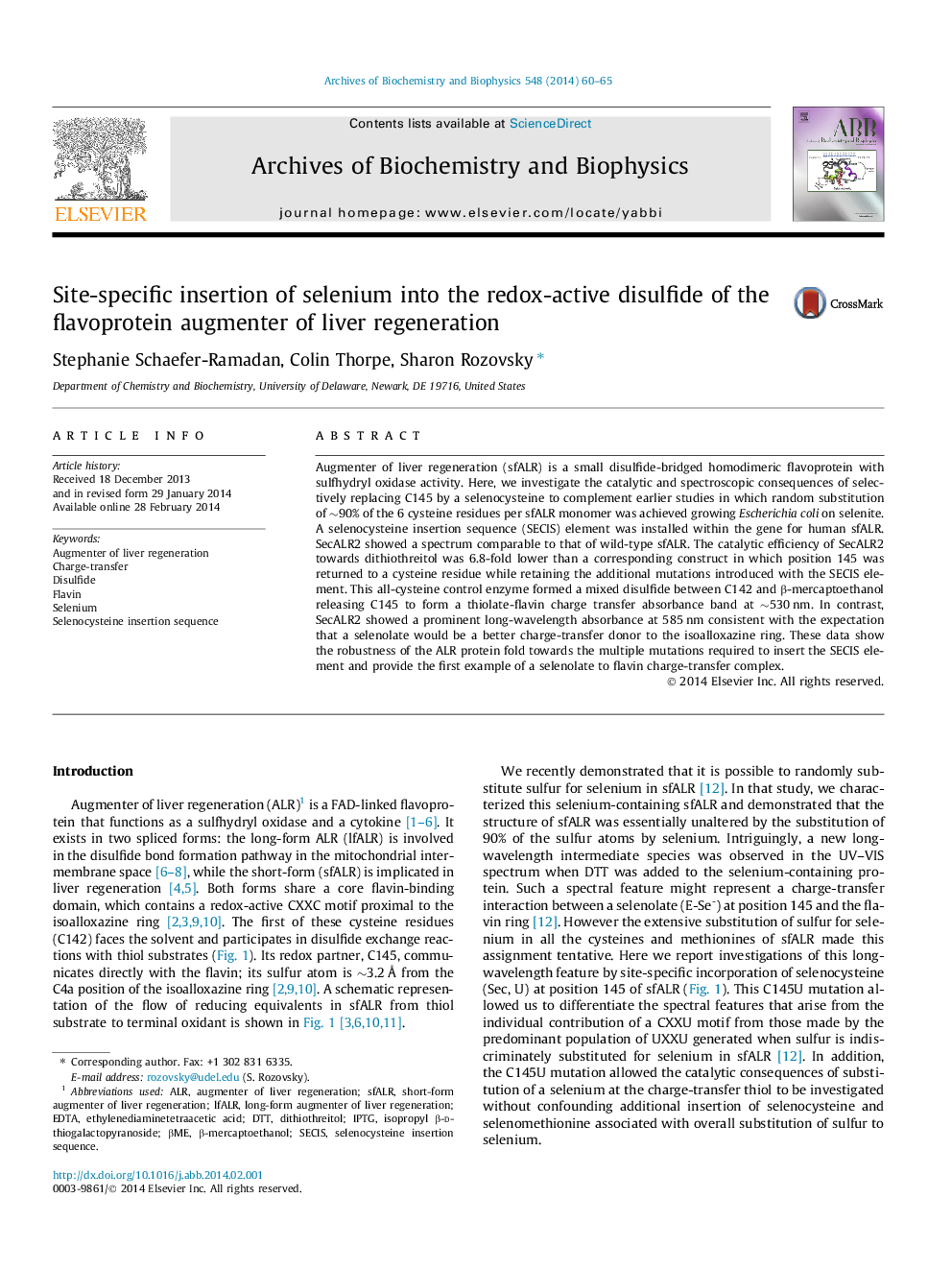| کد مقاله | کد نشریه | سال انتشار | مقاله انگلیسی | نسخه تمام متن |
|---|---|---|---|---|
| 1925208 | 1536351 | 2014 | 6 صفحه PDF | دانلود رایگان |
• Short-form augmenter liver regeneration (sfALR) is a FAD-linked cytokine.
• Selenocysteine was introduced using bacterial selenoprotein synthesis.
• The modification in the active site showed ∼7-fold lower catalytic efficiency.
• Scission of C142–U145 (S–Se bond) yields a U145 to flavin charge-transfer complex.
• This is the first spectrum of a selenolate to flavin charge-transfer complex.
Augmenter of liver regeneration (sfALR) is a small disulfide-bridged homodimeric flavoprotein with sulfhydryl oxidase activity. Here, we investigate the catalytic and spectroscopic consequences of selectively replacing C145 by a selenocysteine to complement earlier studies in which random substitution of ∼90% of the 6 cysteine residues per sfALR monomer was achieved growing Escherichia coli on selenite. A selenocysteine insertion sequence (SECIS) element was installed within the gene for human sfALR. SecALR2 showed a spectrum comparable to that of wild-type sfALR. The catalytic efficiency of SecALR2 towards dithiothreitol was 6.8-fold lower than a corresponding construct in which position 145 was returned to a cysteine residue while retaining the additional mutations introduced with the SECIS element. This all-cysteine control enzyme formed a mixed disulfide between C142 and β-mercaptoethanol releasing C145 to form a thiolate-flavin charge transfer absorbance band at ∼530 nm. In contrast, SecALR2 showed a prominent long-wavelength absorbance at 585 nm consistent with the expectation that a selenolate would be a better charge-transfer donor to the isoalloxazine ring. These data show the robustness of the ALR protein fold towards the multiple mutations required to insert the SECIS element and provide the first example of a selenolate to flavin charge-transfer complex.
Figure optionsDownload high-quality image (143 K)Download as PowerPoint slide
Journal: Archives of Biochemistry and Biophysics - Volume 548, 15 April 2014, Pages 60–65
